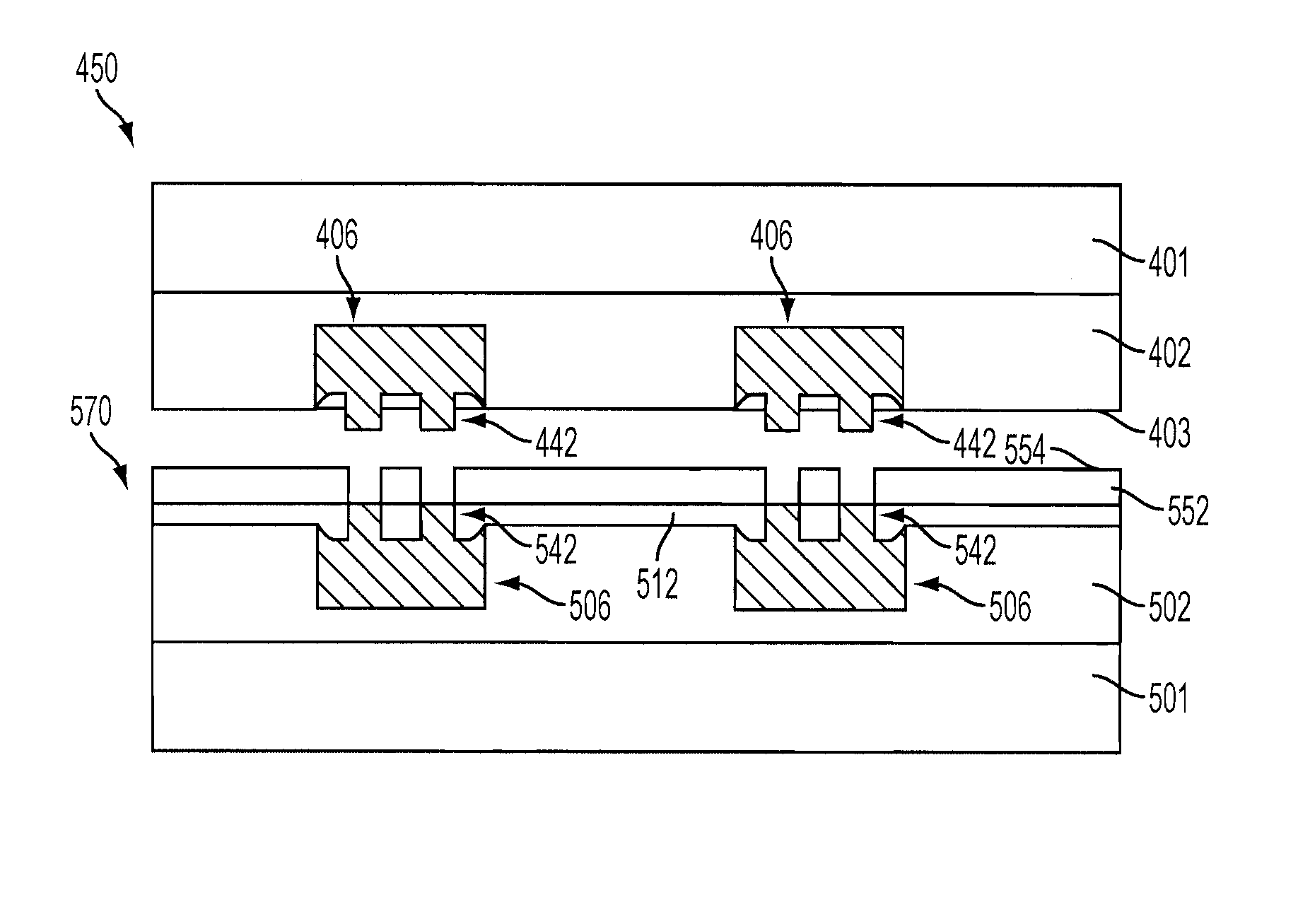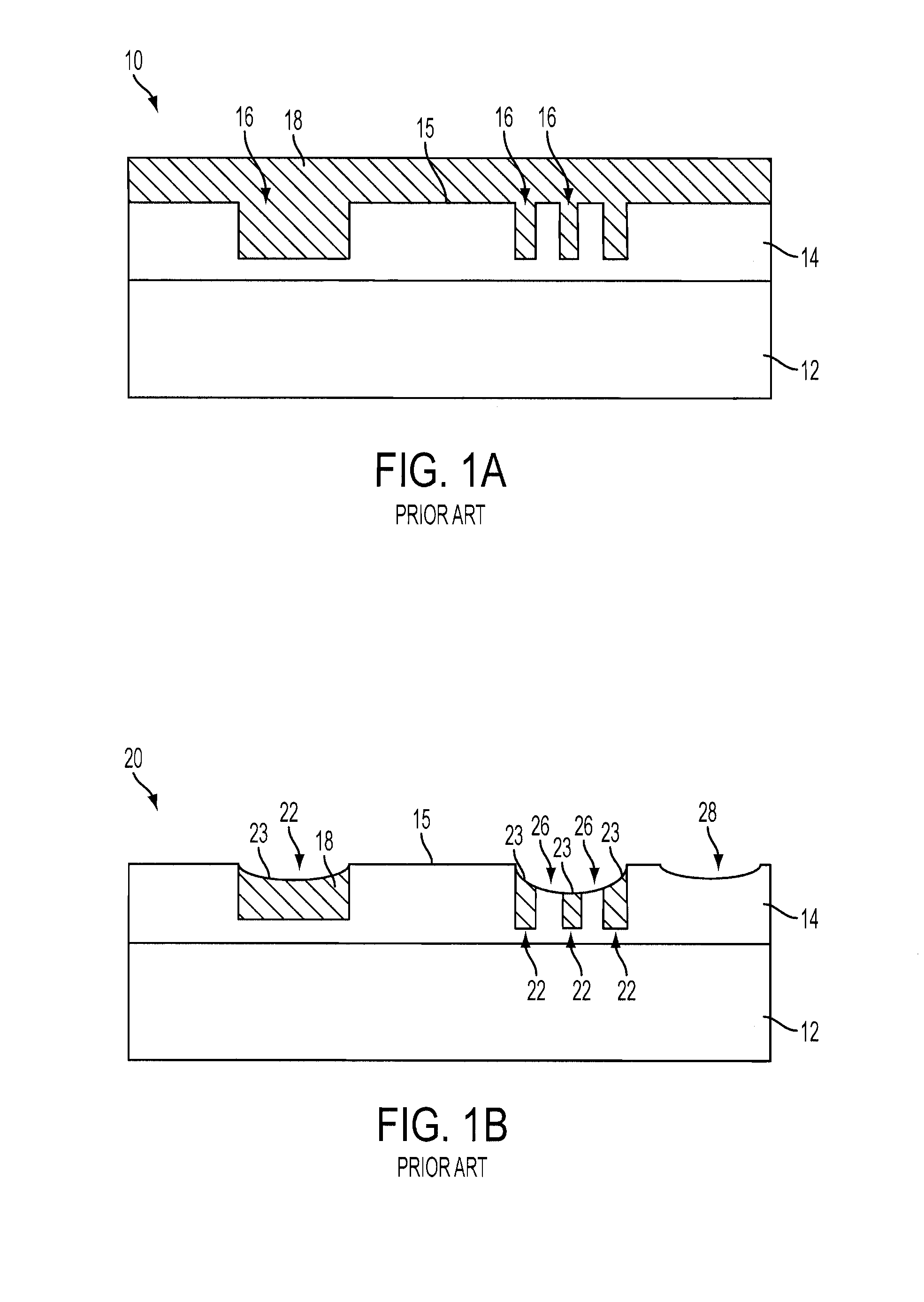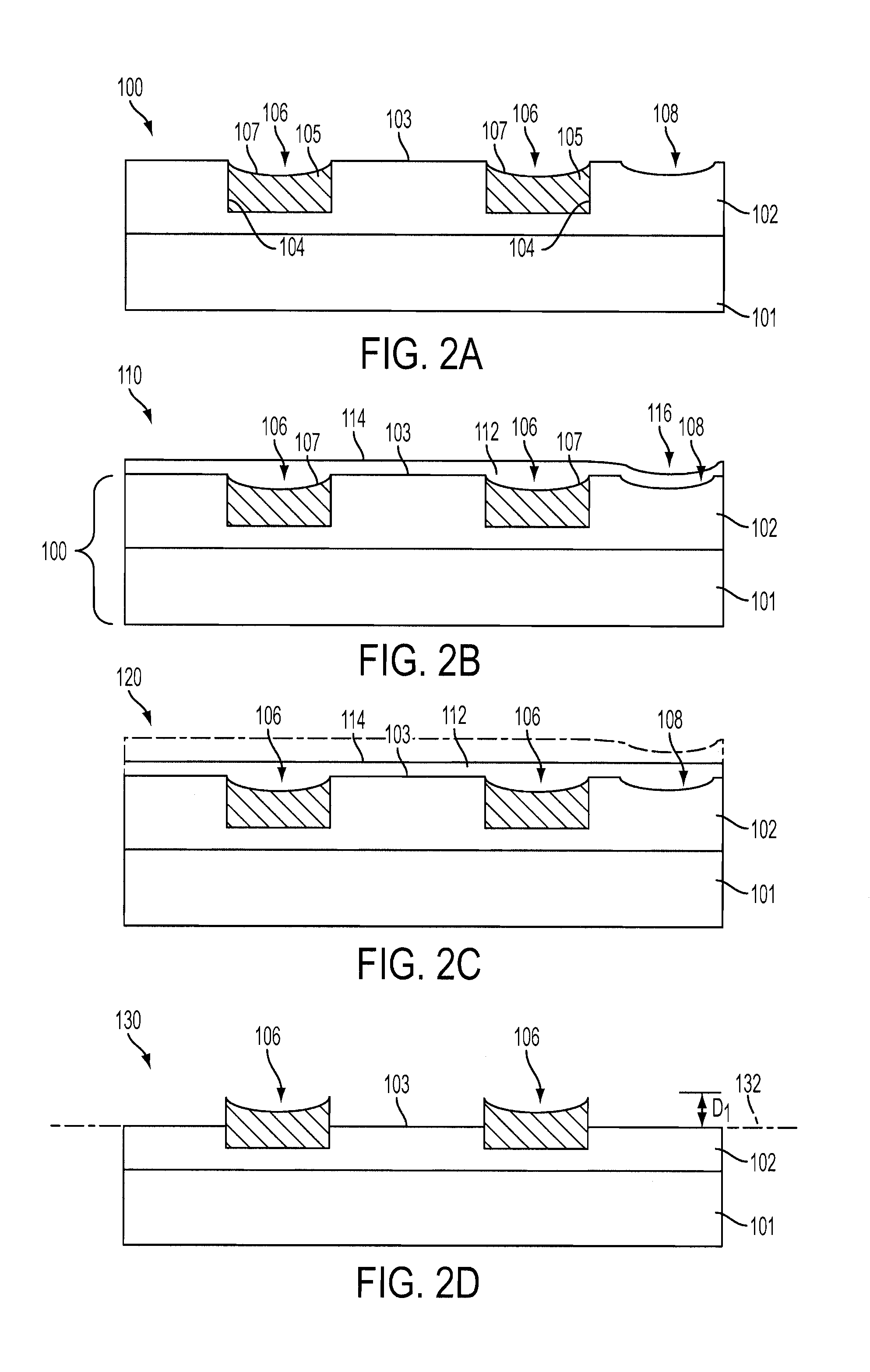Bonding surfaces for direct bonding of semiconductor structures
a technology of direct bonding and semiconductor structure, which is applied in the direction of semiconductor/solid-state device details, semiconductor devices, electrical apparatus, etc., can solve the problems of inability to meet the requirements of the application, the direct bonding process may be undesirable, and the direct metal-to-metal bonding between active conductive features of the semiconductor structure may be prone to mechanical failure or electrical failure in some instances
- Summary
- Abstract
- Description
- Claims
- Application Information
AI Technical Summary
Benefits of technology
Problems solved by technology
Method used
Image
Examples
embodiment 1
[0115] A method of directly bonding a first semiconductor structure to a second semiconductor structure, comprising: providing a first semiconductor structure comprising: at least one device structure comprising a conductive material, the at least one device structure exposed at a bonding surface of the first semiconductor structure; and a dielectric material exposed at the bonding surface of the first semiconductor structure, the dielectric material disposed adjacent the at least one device structure of the first semiconductor structure, an exposed surface of the dielectric material at the bonding surface of the first semiconductor structure defining a bond plane of the first semiconductor structure; causing the at least one device structure of the first semiconductor structure to project a distance from the bond plane of the first semiconductor structure beyond the adjacent dielectric material; providing a second semiconductor structure comprising: at least one device structure co...
embodiment 2
[0116] The method of Embodiment 1, wherein causing the at least one device structure of the first semiconductor structure to project the distance from the bond plane of the first semiconductor structure beyond the adjacent dielectric material comprises removing a portion of the dielectric material from the first semiconductor structure.
embodiment 3
[0117] The method of Embodiment 2, wherein removing the portion of the dielectric material from the first semiconductor structure comprises etching the dielectric material.
PUM
 Login to View More
Login to View More Abstract
Description
Claims
Application Information
 Login to View More
Login to View More - R&D
- Intellectual Property
- Life Sciences
- Materials
- Tech Scout
- Unparalleled Data Quality
- Higher Quality Content
- 60% Fewer Hallucinations
Browse by: Latest US Patents, China's latest patents, Technical Efficacy Thesaurus, Application Domain, Technology Topic, Popular Technical Reports.
© 2025 PatSnap. All rights reserved.Legal|Privacy policy|Modern Slavery Act Transparency Statement|Sitemap|About US| Contact US: help@patsnap.com



